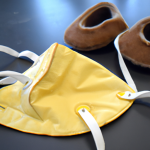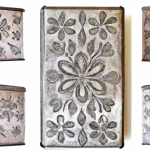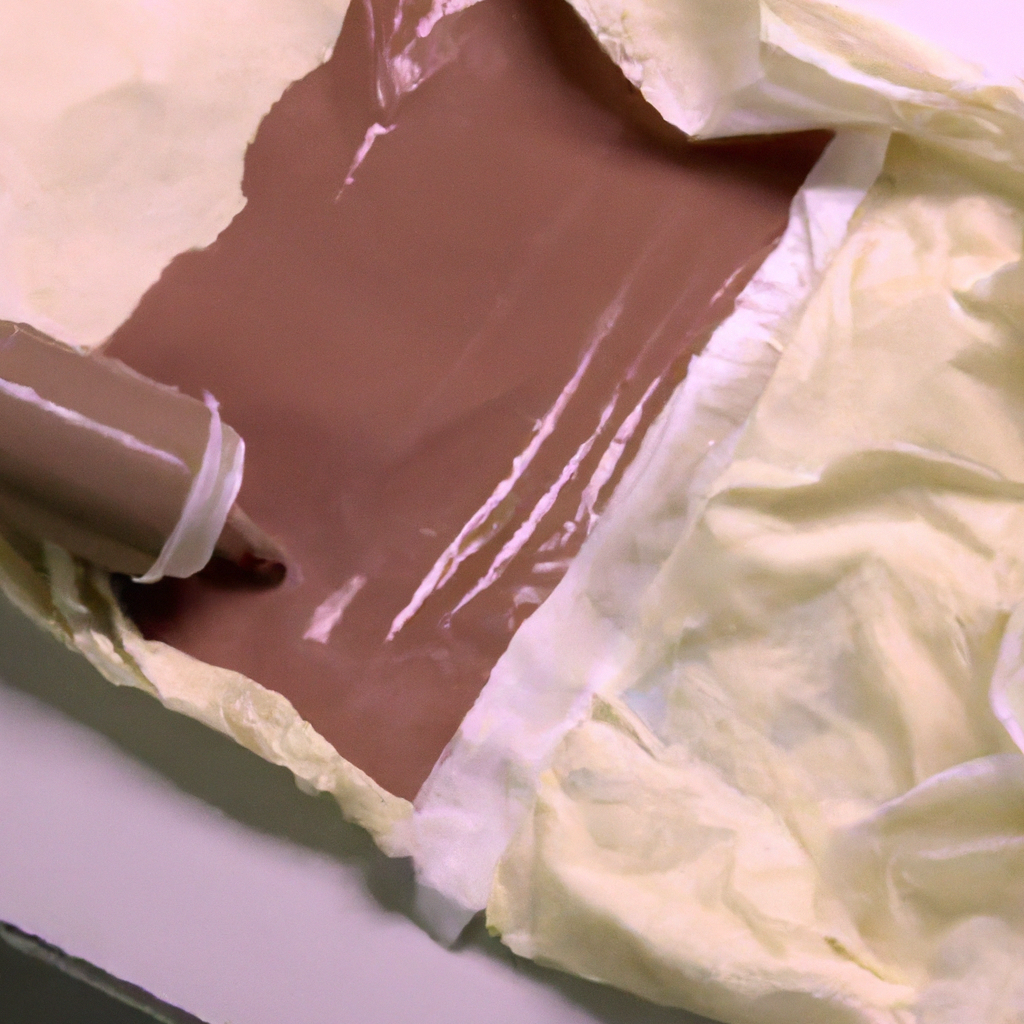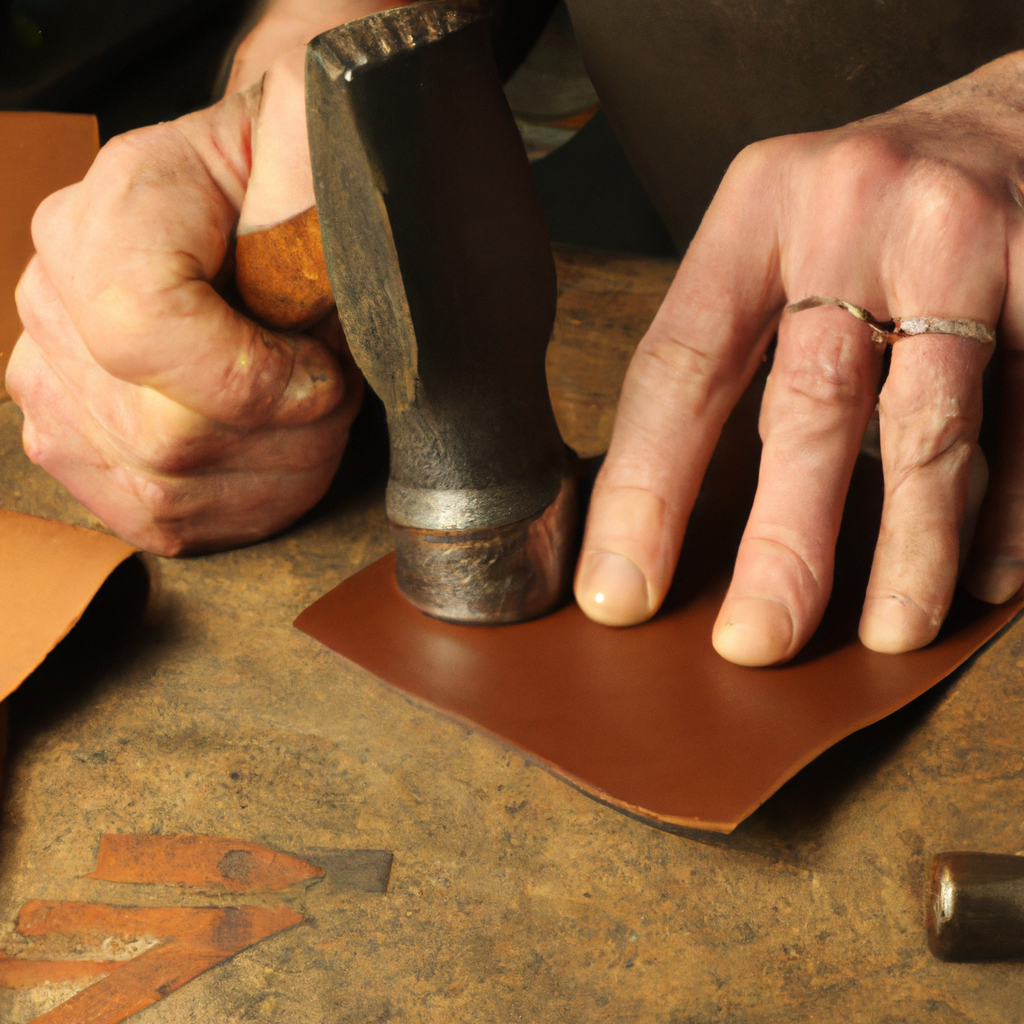Setting up your workspace ergonomically is crucial for leatherworking enthusiasts like yourself. In order to ensure maximum comfort and efficiency while pursuing your craft, it is essential to create a setup that promotes good posture, reduces strain, and enhances productivity. In this article, we will explore some practical tips and techniques that will enable you to design a workspace tailored to your specific needs, allowing you to enjoy the art of leatherworking to its fullest potential. So, let’s dive right in and discover how you can optimize your workspace for a more comfortable and enjoyable leatherworking experience.
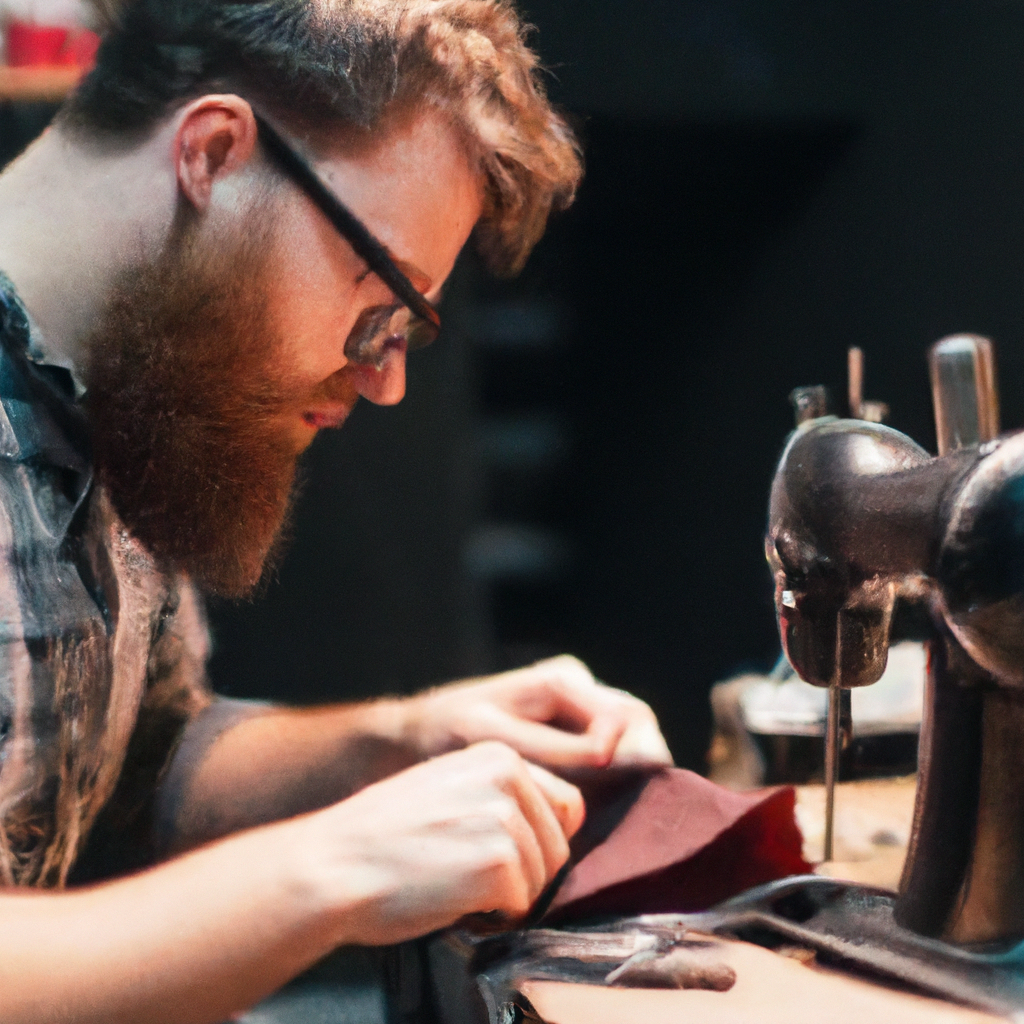
Choosing the Right Workspace
When it comes to leatherworking, selecting the right workspace is crucial for a comfortable and efficient working environment. There are several factors to consider when choosing a suitable location.Selecting a suitable location
First and foremost, consider a workspace with adequate space that allows you to move around freely and comfortably. Look for an area that is well-ventilated and free from excessive noise and distractions. This will help you stay focused and maintain your productivity.Considering the available space
Before setting up your workbench, take a moment to assess the available space. Make sure you have enough room for all your tools, materials, and any additional equipment you may need. It’s important to have a clutter-free work area to avoid accidents and enhance your efficiency.Ensuring proper lighting
Proper lighting is essential for any workspace, including a leatherworking area. Natural light is ideal, but if that’s not possible, invest in good-quality task lighting. Avoid shadows on your work surface by positioning your lighting at different angles. This will help you see details clearly and prevent straining your eyes.Maintaining a comfortable temperature
Another important aspect of a well-functioning workspace is maintaining a comfortable temperature. Leatherworking requires a certain level of precision, and extreme temperatures can interfere with your focus and handling of materials. Ensure that your workspace is adequately cooled or heated, depending on the climate you are working in.Setting Up Your Workbench
Once you have chosen the right workspace, it’s time to set up your workbench. This is where you will spend most of your time, so it’s important to create a functional and comfortable work area.Determining the ideal height
The height of your workbench is crucial for maintaining proper posture and reducing unnecessary strain on your body. Determine the ideal height by ensuring that your forearms are parallel to the floor when you are seated comfortably. Adjust the height of your workbench accordingly to achieve a natural and neutral working position.Creating a spacious work area
It’s essential to have enough space on your workbench for your tools, materials, and any projects you may be working on. Invest in a sturdy and spacious work surface that can accommodate your leatherworking needs. This will allow you to work efficiently and keep everything within easy reach.Adding storage options
To keep your work area organized and free of clutter, add storage options to your workbench. Utilize drawers, shelves, or pegboards to store your tools, materials, and accessories. This will not only save space but also make it easier to find and access what you need when working on different projects.Arranging tools and materials
Organize your tools and materials in a way that makes sense to you. Keep frequently used items within arm’s reach and arrange them in a logical order. This will help streamline your workflow and save time searching for specific tools or materials during your leatherworking sessions.Optimizing Seating and Posture
While working on your leather projects, it’s important to prioritize your comfort and maintain proper posture. This will help prevent back pain, muscle strain, and other potential discomforts associated with long hours of sitting.Choosing an adjustable chair
Investing in an adjustable chair is essential for maintaining proper posture during your leatherworking sessions. Look for a chair that provides adequate lumbar support and allows you to adjust the height, backrest, and armrests. This will enable you to customize the chair to fit your body and work comfortably for extended periods.Setting the chair height
Adjust the height of your chair so that your feet are flat on the floor and your knees are at a 90-degree angle. This will promote good blood circulation and prevent leg fatigue. If your feet don’t reach the floor comfortably, consider using a footrest to support your feet and help maintain a proper and comfortable posture.Using a footrest if needed
For those who need additional support or have difficulty reaching the ground with their feet, a footrest can be a great solution. Place the footrest under your desk or workbench at a height that allows your feet to rest comfortably. This will help alleviate strain on your legs and lower back.Maintaining a neutral posture
While working on your leather projects, it’s important to maintain a neutral posture to minimize the risk of injury and strain. Avoid slouching or hunching forward, as this can lead to back and neck pain. Keep your back upright, shoulders relaxed, and head aligned with your spine. Additionally, take short breaks and stretch periodically to prevent stiffness and improve circulation.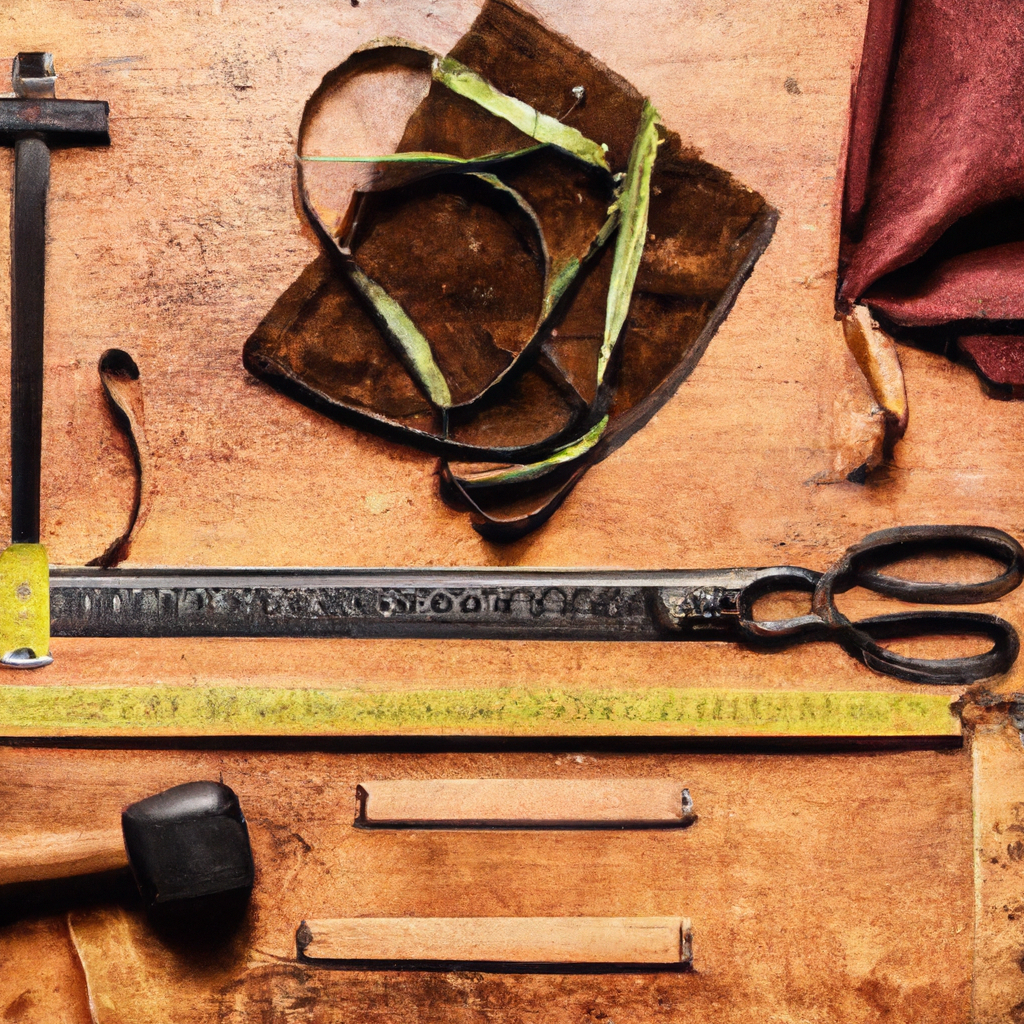
Positioning Your Leatherworking Tools
Properly positioning your leatherworking tools is essential for efficiency, ease of use, and safety. Here are some guidelines for arranging your tools on your workbench.Arranging your cutting tools
Keep your cutting tools, such as knives and scissors, easily accessible on your workbench. Position them in a way that ensures safety and prevents accidental damage or injury. Consider using a dedicated tool holder or magnetic strip to keep your cutting tools organized and within reach.Positioning the stitching tools
Stitching tools, such as needles, awls, and thread, are crucial for leatherworking projects. Arrange them in a way that makes them easy to locate and use. Consider using a tool roll or a small container to keep your stitching tools organized and protected.Placing the edge bevelers and burnishers
Edge bevelers and burnishers are commonly used in leatherworking to give edges a smooth and finished look. Position them within reach on your workbench, ensuring that they are easily accessible when needed. Consider using a designated holder or a small tray to keep them organized and prevent damage.Organizing additional equipment
Depending on your leatherworking techniques and projects, you may have additional equipment such as punches, stamps, or rivet setters. Organize them in a way that suits your workflow and personal preferences. Utilize tool rolls, organizers, or designated containers to keep these tools easily accessible and organized.Organizing Leather Materials
Proper organization of your leather materials is essential to maintain an efficient and clutter-free workspace. Here are some tips on how to keep your leather hides and materials organized.Storing leather hides properly
Leather hides can take up significant space and need to be stored properly to prevent damage and deterioration. Consider investing in a sturdy rack or a dedicated area to store your leather hides vertically. This will help preserve their quality and make it easier to access and select the right hide for your projects.Utilizing racks or shelves
Utilize racks or shelves to store smaller pieces of leather, such as scraps, tooling leather, or pre-cut shapes. Arrange them in a way that makes it easy to identify and retrieve specific materials when needed. Consider categorizing them by color, thickness, or project type for better organization.Categorizing materials for easy access
Categorizing your leather materials can greatly simplify your workflow and save time. Create designated areas or containers for different types of leather, such as full-grain, top-grain, or suede. Additionally, consider labeling your containers or using color-coded systems to quickly identify and locate specific materials.Keeping scrap leather organized
Scrap leather is often unavoidable in leatherworking projects. Instead of allowing it to accumulate and create a mess, establish a system for organizing and utilizing scrap pieces. Consider using bins, pouches, or even a scrap leather binder to organize and store your scraps based on size, color, or usability. This way, you can easily find and repurpose them for future projects.Maintaining a Clean and Clutter-Free Workspace
A clean and clutter-free workspace is essential for a productive and safe leatherworking environment. Here are some tips to help you maintain an organized and tidy workspace.Implementing a regular cleaning routine
Set aside time before and after each leatherworking session to tidy up your workspace. Wipe down your workbench, remove any debris or dust, and organize your tools and materials. Establishing a regular cleaning routine will not only create a pleasant working environment but also help prevent accidents and improve efficiency.Organizing and labeling storage containers
Invest in storage containers, boxes, or bins to keep your tools, materials, and supplies organized. Labeling these containers will make it much easier to find what you need quickly. Sort your items into categories and place them in their designated containers to maintain a clutter-free workspace.Removing non-essential items
Take a moment to assess your workspace and remove any non-essential items. Keeping only the necessary tools, materials, and equipment on your workbench will provide you with more space to work and reduce distractions. Store any infrequently used items in a designated storage area or drawer to keep your workspace clean and organized.Minimizing distractions
When working on your leather projects, it’s important to minimize distractions to maintain focus and productivity. Keep your workspace free from unnecessary items, turn off notifications on your phone or computer, and create a designated area or time for leisure activities. By creating a dedicated and distraction-free working space, you can fully immerse yourself in your leatherworking projects.Ensuring Adequate Ventilation
Proper ventilation is crucial for maintaining a healthy and safe leatherworking environment. Here are some tips to ensure adequate ventilation in your workspace.Installing a ventilation system if necessary
If your leatherworking processes involve the use of chemicals, dyes, or adhesives that produce fumes or odors, consider installing a ventilation system. This will help remove these harmful substances from the air and maintain a safe breathing environment. Consult with a professional to determine the appropriate type and size of ventilation system for your workspace.Using a dust collection system
Leatherworking can generate dust particles, especially during cutting or sanding processes. To prevent dust accumulation and protect your respiratory health, consider using a dust collection system. This system will capture airborne particles and minimize their dispersion, helping you maintain a clean and healthy workspace.Working in a well-ventilated area
Whenever possible, work in a well-ventilated area, preferably near a window or with access to fresh air. Open windows or doors to promote air circulation and reduce the buildup of stagnant air. Good ventilation not only improves air quality but also helps regulate temperature and humidity levels in your workspace.Keeping chemicals and adhesives properly sealed
When not in use, ensure that your chemicals, dyes, adhesives, and other potentially hazardous substances are properly sealed and stored. This will prevent them from releasing fumes into the air and maintain a safe and clean workspace. Store them in a designated area away from direct sunlight or excessive heat to preserve their effectiveness and minimize health risks.Investing in Proper Lighting
Proper lighting is essential for any workspace, including a leatherworking area. Here are some tips to ensure you have adequate and suitable lighting for your leather projects.Utilizing task lighting
Task lighting provides concentrated light in specific areas, making it ideal for detailed work such as leatherworking. Invest in a high-quality desk lamp or adjustable task light that can be positioned to direct light precisely where you need it. This will enhance visibility and minimize eye strain during your leatherworking tasks.Avoiding shadows on work surfaces
When positioning your lighting, be mindful of shadows that may be cast on your work surface. Shadows can make it difficult to see details clearly and affect the accuracy of your work. Position your lighting sources at different angles and distances to minimize shadows and achieve consistent illumination across your workspace.Adjusting lighting for different tasks
Leatherworking involves a variety of tasks, such as cutting, stitching, and tooling. Adjust your lighting accordingly to suit each task. For detailed work, position your lighting closer and angle it to eliminate shadows. For larger-scale tasks, such as tracing patterns, ensure uniform and sufficient lighting across the entire work area.Considering natural lighting options
Whenever possible, take advantage of natural light in your workspace. Position your workbench near a window or in an area with ample natural light. Natural light provides a more accurate representation of colors and details, reducing the strain on your eyes. However, be cautious of direct sunlight that can cause excessive heat or fading of materials.Using Supportive Tools and Accessories
To enhance your leatherworking experience and ensure safety, there are several supportive tools and accessories you should consider utilizing.Using a cutting mat or self-healing mat
Protect your work surface and extend the life of your cutting tools by using a cutting mat or self-healing mat. These mats provide a resilient and stable surface for cutting leather and help prevent accidental damage to your workbench. Choose a size that fits your work area and make sure it is thick enough to protect against knife punctures.Using a leather stamping and punching pad
A leather stamping and punching pad is an essential tool for creating impressions and perforations on leather. This soft and durable pad absorbs the impact of your tools, preventing damage to your work and ensuring clean and consistent results. Choose a size and thickness that suits your work and consider investing in a high-quality pad for optimal performance.Utilizing hand tool organizers
To keep your hand tools readily accessible and in good condition, consider utilizing hand tool organizers. These organizers come in various forms, such as tool rolls, trays, or drawers. Choose an organizer that allows you to store your tools securely and access them easily. Keeping your tools organized not only saves time but also extends their lifespan.Wearing appropriate safety gear
Leatherworking involves handling sharp tools and working with potentially hazardous materials. Protect yourself by wearing appropriate safety gear, such as safety glasses, gloves, and a dust mask. Safety glasses will shield your eyes from flying debris, gloves will protect your hands from cuts and abrasions, and a dust mask will prevent inhalation of dust particles and chemical fumes.Will an Ergonomic Leatherworking Workspace Help Me with Beginner Projects?
Yes, an ergonomic leatherworking workspace can definitely help you with simple leather projects. Having a comfortable and well-organized setup will make it easier for you to focus on learning and perfecting your new craft. The right workspace can improve your efficiency and prevent unnecessary strain on your body.


